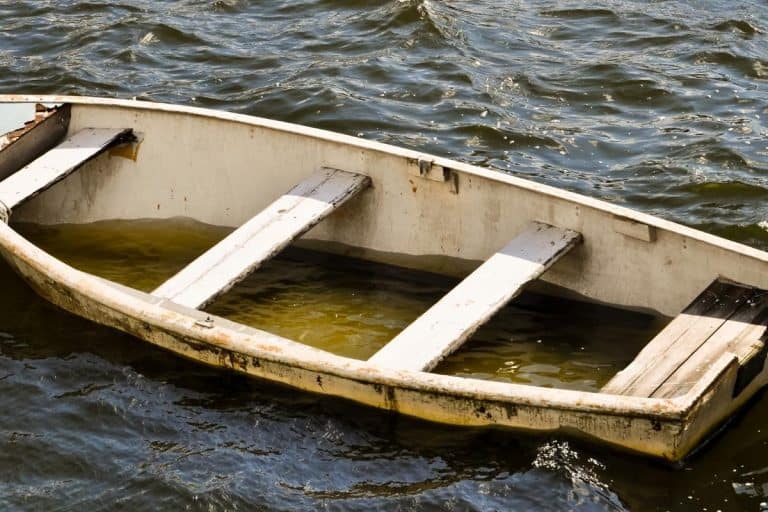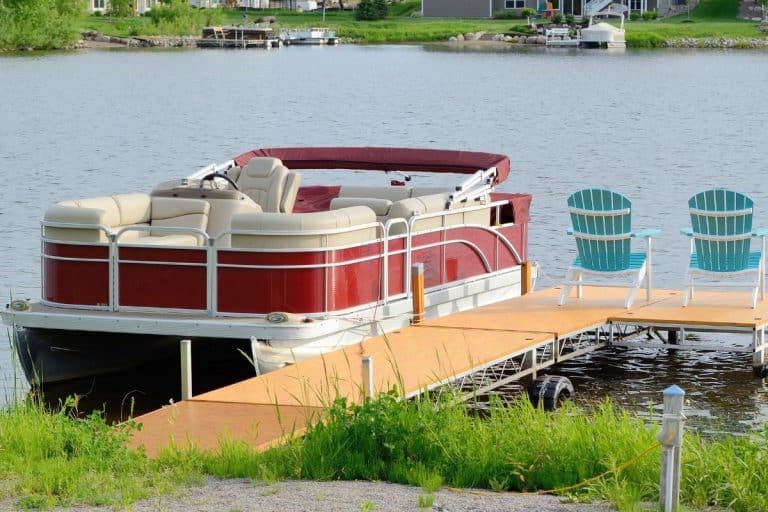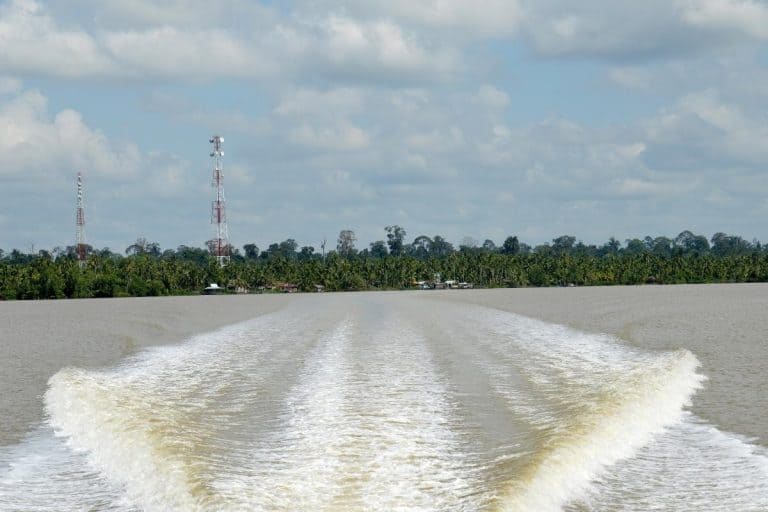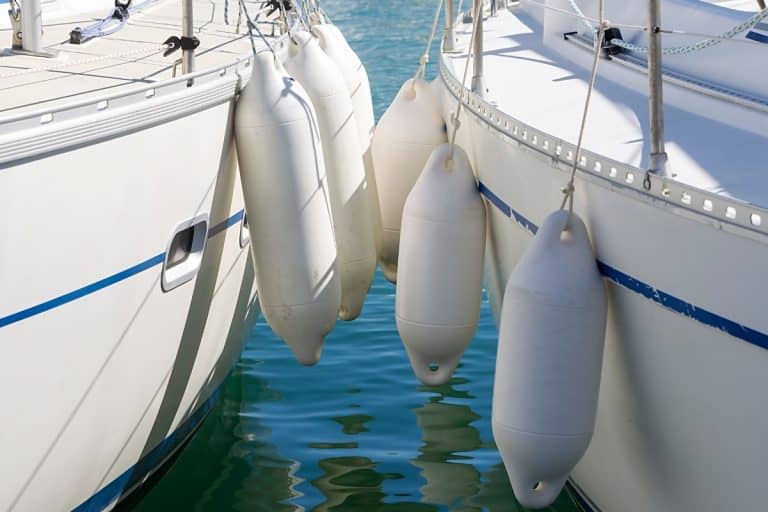Are Tritoons Faster Than Pontoons?
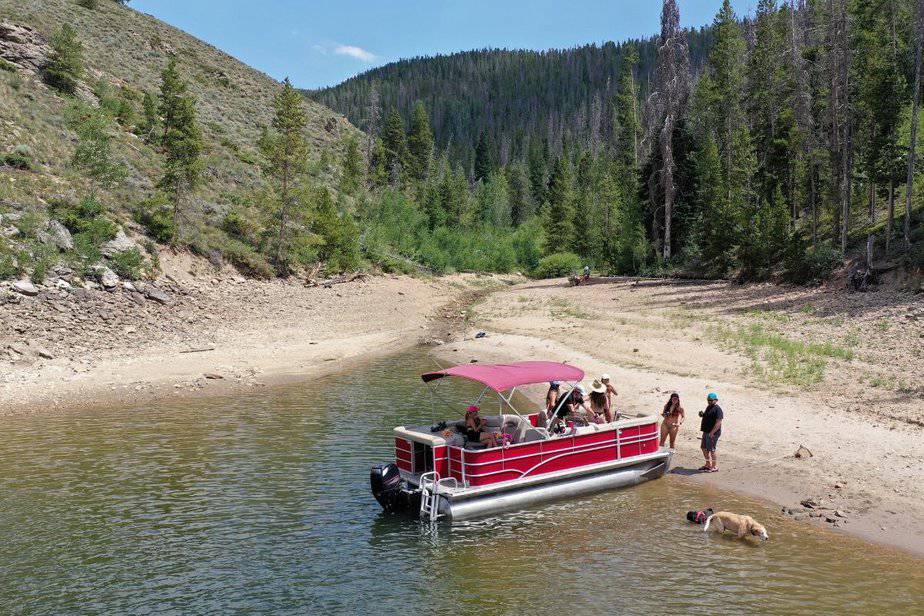
You’re out on the water one day when you see a boat zipping by that looks a lot like a pontoon. You can’t help but wonder, how is it traveling so quickly? Then later, you realize that it’s not a pontoon at all, but a tritoon. Is a tritoon really that fast?
Tritoons are indeed faster than pontoons, and by a good degree too. The average horsepower (HP) for a pontoon boat is 165 HP, while for tritoons, they can easily reach 250 HP and some can even exceed 350 HP.
If you’re new to the world of tritoon boats, then this is one post you’re not going to want to miss. In it, I’ll talk more about what a tritoon is, what makes them faster than pontoons, and whether you’ll want to think about upgrading your pontoon to a tritoon. Keep reading!
What Is a Tritoon?
To answer what a tritoon is, first I have to talk about pontoon boats, so here’s a quick recap for you. Pontoon boats rely on pontoon tubes, also known as floats, made of steel, aluminum and nylon, or PVC. Some pontoon tubes include plastic frames, but because these can be a little gaudy, lots more pontoon tubes don’t have frames at all.
A pontoon boat is built with two pontoon tubes, one on either side of the boat. These tubes provide buoyancy so your pontoon boat can float in shallow or deeper waters.
Tritoons are a variation of the pontoon boat with three pontoon tubes instead of two. The first two are positioned on either side of the boat like a pontoon boat while the third is straight down the center.
The positioning of the third tube in a tritoon is somewhat lower than the other two, and the center tube may feature a more sizable diameter too.
What does the third pontoon tube of a tritoon do? Lots, actually. The design of the boat allows the tritoon to easily traverse choppy conditions that most pontoons can’t handle without buckling at least a little.
Even if other boats have created a wake on the river or lake in which you’re riding, you don’t have to worry about stability in the least if you’re commandeering a tritoon.
Many tritoons include hydraulic steering functionality that allows for tighter, faster turns than what you’d get in a pontoon boat. If you like the shape and structure of a pontoon but miss the maneuverability you get with other boats, then a tritoon should more than satisfy.
Tritoons, given their very design, outsize even pontoon boats. On average, a tritoon is 22 to 30 feet long whereas the average pontoon is 18 to 25 feet.
As you’d expect with that size, tritoons have a ginormous deck that can accommodate even more passengers than the many you can bring onboard a pontoon. If you upgrade to a tritoon, you can fit as many as 14, even 25 people at a time depending on the size of your tritoon.
The weight distribution of a tritoon is even better than that of a pontoon too, so they’re practically one of the securest boats on the water. The only downside of a tritoon boat is that with all these perks comes a pretty substantial price increase compared to buying a pontoon boat.
Pontoons can generally be valued at $18,000 to $60,000 new on average, whereas tritoons can cost $35,000 to start.
Are Tritoons Faster Than Pontoons? Why?
I didn’t even talk about the biggest advantage tritoons have over pontoons, and that’s the huge speed increases.
As I’ve noted before on Get Busy Boating, the average pontoon speed is 18 to 25 miles per hour, which translates to about 165 HP max. An average 24-foot pontoon boat with 25-inch pontoon tubes, 28 gallons in fuel capacity, and 2,315 pounds in passenger capacity can reach only 150 HP at most.
That’s true even of some 24-footers with 27-inch pontoon tubes, 28 gallons of fuel capacity, and 2,564 pounds in weight capacity.
Compare that to a tritoon of the same size with three 25-inch pontoon tubes. If this boat can hold 63 gallons of fuel and 2,697 pounds in passenger/gear weight, its max power is 225 HP. Most tritoons are even faster, reaching 250 HP easily. Some of the most souped-up tritoons on the market can hit speeds of 350 HP.
Why are tritoons so much faster?
Wouldn’t adding the bulk of a third pontoon tube slow the boat down instead of speed it up? Actually, no. The additional pontoon tube allows a tritoon to achieve optimal weight distribution, as I said, as well as great balance when the boat is on the water. This contributes to the much higher HP rating of a tritoon.
If you have friends and family who beg you to carry them around on your boat so they can water ski or sit on inner tubes behind you, they may have found doing so on a pontoon boat less than exciting. Watersport towing activities are much better on a tritoon since the boat can reach the necessary speeds to make these activities thrilling again.
Can a Pontoon Ever Be Faster Than a Tritoon?
Well, while I would tell you to never say never, so far, that doesn’t seem to be the case. If you recall from my last article regarding whether or not pontoons are considered runabouts, I talked about a boat racing event called the Shootout at the Lake of the Ozarks in Missouri. Although many pontoons entered the race, most were tritoons rather than pontoons.
Also in that article, I shared some great, non-modification tips to enhance the speed of your pontoon boat. You can always try those things and see if they make an impact on your pontoon’s speed. If not and if you’re desperate for more speed from your pontoon, you can indeed modify your boat so that it may perform better and faster.
Do keep in mind that making modifications to your pontoon boat will more than likely void any existing warranty you have from the boat manufacturer. That means that if something happens to go wrong with your pontoon as a result of your tinkering, you’re on your own. You’d have to find the replacement parts and pay a pontoon repairperson to install them.
If that’s a risk you’re willing to take, here are a few other ways you can modify your pontoon boat for more speed.
Get the Boat Underskinnned
Underskinning is a service in which a professional installs metal sheets beneath your pontoon boat’s deck. These sheets add a smooth, shiny finish to the boat that helps reduce drag.
Just don’t expect miracles if this is the route you opt to take. Your speed boosts will be incredibly minimal; I’m talking like 2 MPH here. Considering you might spend upwards of $500 for underskinning, only you can decide if it’s worthwhile.
Add Lifting Strakes
Their three-tubed design allows a tritoon to rise slightly higher out of the water, boosting its speed. You can mimic this setup with your pontoon by getting lifting strakes installed.
What are lifting strakes? They’re metal lifts that go beneath your pontoon, sometimes on the sides as well. Many newer pontoon boat models come with lifting strakes already added, but an older pontoon might not be as lucky.
Having lifting strakes on your pontoon boat can boost the fuel efficiency so you can go longer without having to refill your boat’s gas tank. You also will ride more smoothly on the water, much like you would in a tritoon. Best of all, lifting strakes can enhance your pontoon boat’s speed.
You might see a more significant speed increase here, as much as 10 percent to even 15 percent by adding lifting strakes Just make sure that if you decide to get lifting strakes installed onto your pontoon boat that they’re high-quality strakes that will last. Also, be aware that this job can cost several thousand dollars to do it right.
Can You Upgrade Your Pontoon to a Tritoon?
What if you make one or both of these modifications to your pontoon boat but it’s still not performing on par with a tritoon? In a way, that’s to be expected, but don’t worry. You’re not completely out of options yet.
You can always retrofit your pontoon boat and make it a tritoon. Keep in mind this job costs $4,000 on the lower end and can be a lot more costly than that. That’s why it’s always best to get a quote for the work before you commit to it.
If the cost to get a third pontoon tube installed surpasses what you’d pay for a tritoon boat, then you’re better off buying a tritoon outright.
Also, while you’ll see lots of tempting tutorials, such as this one I found on Pontoon And Deck Boat Magazine that encourage people to add the third pontoon tube to your boat yourself, I wouldn’t really recommend you do that. Unless you’re incredibly well-acquainted with pontoon boats and you’ve successfully worked on your boat enough times that you feel comfortable enough to risk damaging your boat, leave it to the pro’s
I know, the idea of saving a buck here and there by going the DIY route is an appealing one, but using lower-quality materials means your pontoon tube likely won’t hold up. You’ll have to work harder to keep it clean and in good shape.
You’ll also likely have to patch it up more often, so what money you saved before is now costing you more later. Oh, and it’s costing you more time too, and a lot of it.
Once you get your pontoon boat retrofitted into a tritoon, you should have all the speed and performance advantages of that boat. Do keep in mind that since you only added a third pontoon tube though that you won’t have more deck space nor room for more passengers. You must continue to abide by your boat’s weight limit capacity as well.
Conclusion
That third tube in tritoons makes all the difference, allowing the pontoon boat to be bigger, more balanced boats with greater deck space, a higher passenger capacity, and a much faster performance.
Although you can modify your pontoon boat through lifting strakes or underskinning, the only way to see speeds on a pontoon that are comparable to a tritoon is with the addition of that third tritoon tube. Whether you decide to buy a tritoon boat new or used or get a third tube installed on your pontoon a tritoon is going to be much faster than your typical pontoon boat.
